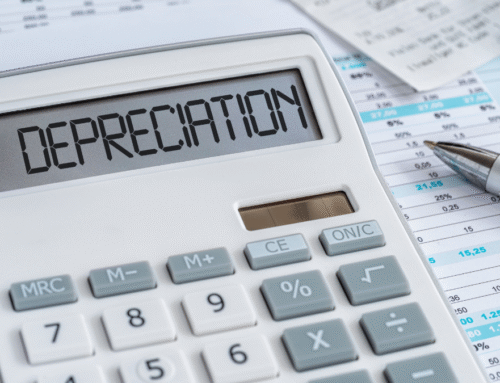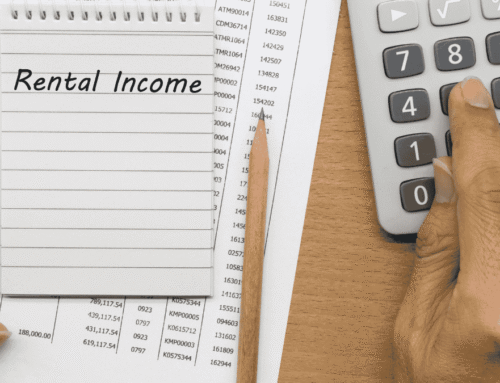How to Buy U.S. Investment Property as a Non-Resident
Buying Investment Property in the USA: A Step-by-Step Guide for Non-Residents
Thinking about buying investment property in the USA as a non-resident? Well, I did! Over the last 10 years I’ve purchased over 120 properties in the U.S. as a non-resident foreign national. My Wife and I manage our U.S. portfolio from our homes in the UK and Argentina. We also help other foreigners build their own profitable rental property portfolios in the United States.
In this guide, I’m going to walk you through my own U.S. property purchase process step-by-step. You’re going to learn the exact process we use to buy our own U.S. investment properties. I hope you find this useful!
Investment Properties: Browse Investment Property For Sale in The USA
Step 1: Defining Your Investment Goals

Define Your USA Property Investment Goals
Start by getting clear on your investment strategy. Are you looking for monthly cash flow, long-term appreciation, or both? This will help you decide what kind of property and location to target.
My personal goals are to double my equity within 5 years. I know that if I put down a 30% deposit, and the property appreciates by 5% p.a., I’ll hit that goal. $50,000 becomes $100,000. That gives me options. For example, I can refinance to pull down equity to purchase another property.
I also want to build passive income. I know that in the right market I can increase my rents by a small amount each year. That helps me to grow my net income over time. Some U.S. rental properties I bought 5 years ago that were generating $250/month in net cashflow are now paying $500+.
You don’t need to copy my U.S. property investment strategy. It’s just what’s worked for me over the last 10 years. You should set goals and objectives that align with your own financial and lifestyle goals. There are many ways to catch a fish, I just stick to what I know works for me.
Step 2: Choose the Right Market for Buying Investment Property in the USA

Choose The Right Market For Your USA Property Investment
Pick a market that aligns with your goals. Look for areas with strong jobs market, high rental demand, landlord-friendly laws, and affordable housing. Secondary and tertiary markets often offer better yields than coastal cities.
Personally, I buy rental properties in the suburbs of secondary markets in the Midwest and South. That’s where I find the best combination of affordable house prices, stable jobs markets, and high rental demand. You can explore the best U.S. real estate markets for foreign investors in 2025 here: The Best U.S. Real Estate Markets For Non-Resident and Foreign National Investors in 2025
Step 3: Setting Up Your U.S. Investment Structure

Set Up Your USA Property Investment Structure
Most international investors set up a U.S. Limited Liability Company (LLC) to hold their U.S. property. This structure offers liability protection and can simplify tax reporting.
There are a bunch of other options to consider, including: C-Corps, Foreign Corporations, and Trusts. The right structure for you will depend on a range of factors including your country of residence and tax planning objectives. You can read more about how to structure your U.S. real estate investment for tax and liability protection in my guide: How to Set up Your U.S. Property Investment for Tax Efficiency and Liability Protection
Step 4: Finding and Analysing U.S. Investment Properties

Find and Analyse U.S. Investment Properties
Work with an agent experienced with international buyers to find suitable deals. Use rental comps and cash flow projections to analyse each property’s performance. Make sure it meets DSCR loan criteria (typically 1.0+ DSCR). It’s critical to use accurate data and realistic assumptions when underwriting your deal for cashflow. There are lots of online tools and apps that can help with this. I personally like the DealCheck App.
When you’re putting together your cashflow analysis, use accurate data or realistic assumptions for the following:
- Rental Income
- Property Management Fees
- Property Taxes
- Insurance
- Maintenance/Repairs
- Capital Expenditure Reserve
- Vacancy Reserve
- Capital Growth
- Rent Increases
- Expense Increases
If you’re too generous with your rent and growth assumptions, and/or conservative with your costs, you could find that your property actually loses money every month. You really want to try and avoid that! You can read more about DSCR loans in my guide: DSCR Loans for Non-Residents and Foreign Nationals
Looking for deals? Browse investment property for sale in the USA — hand-picked for non-resident investors like you.
Step 5: Get Pre-Approved to Buy Investment Property in the USA

Get Pre-Approved For a Mortgage in The USA
If you’re buying rental property, the best type of loan for foreigners is usually a DSCR Loan. Contact a lender who offers DSCR loans for non-residents. You’ll need to provide the property address and rent roll to get a pre-approval within 2 to 4 business days. Once you have a pre-approval in hand, you have everything you need to go and make an offer! Learn more about U.S. mortgages for foreign nationals and non-residents here: U.S. Mortgages For Foreign Nationals and Non-Residents: Your Essential Guide
Step 6: Making an Offer and Negotiating Your U.S. Investment Property

Making an Offer and Negotiating Your US Investment Property
Now you can go back to the property you analysed and negotiate a deal with the seller. Your real estate agent or buyer representative will help you negotiate terms that align with your financing and inspection timelines (hint – that’s my job!).
For example, I prefer to negotiate seller concessions instead of price discounts. That gives me (or my client) hard cash to pay for closing costs. In some cases, that also allows us to buy down the interest rate on our mortgage. That improves monthly cashflow (lower mortgage payment), and significantly reduces the total amount of interest we’ll pay over the term of the loan.
Step 7: Signing The Purchase Contract For Your U.S. Property

Signing The Purchase Contract For Your US Property
If your offer is accepted, you’ll sign a formal purchase agreement. This contract outlines the price, contingencies, closing date, and other key terms. You should always have contingencies for a title search, home inspection, appraisal, and mortgage approval. Usually, you’ll have between 30 to 60 days after signing to carry out your due diligence.
Step 8: Conducting Your Due Diligence

Conducting Your Due Diligence
Your attorney or title company will perform a title search. You’ll need to hire an independent inspector to carry out a home inspection. I also highly recommend getting a sewer scope. These cost a couple of hundred dollars, and could save you tens of thousands of dollars in unexpected repairs. Your mortgage lender will get a third-party appraisal.
We use this stage to confirm the property’s value and condition. In some cases, there may be previously unseen issues with the condition of the property. That might mean renegotiating the price, or having the seller fix the issue. The appraisal will tell you and your mortgage lender what the real value of the property is. It’s not uncommon for a deal to fall through due to a bad inspection or low appraisal. I see that as a good thing. I’ve basically just saved myself from overpaying, or buying an expensive problem.
Step 9: Closing on Your U.S. Property Remotely

Closing on Your US Property Remotely
As a foreign investor, you can close on your U.S. property remotely using a title company or attorney. Funds are wired internationally, and all documents are signed digitally or via courier. There are various ways to do this, and it will depend on what process your mortgage lender is comfortable with. I’ve closed on 100% of my U.S. investment properties remotely. It’s not particularly complicated.
Step 10: Hiring a U.S. Property Manager

Hiring a US Property Manager
Now you own the property, congratulations! If there isn’t a tenant and local property management already in place, you’ll need to hire a professional property manager. They’ll handle leasing, rent collection, maintenance, and tenant communication. This is essential for remote investors who want truly passive income. Most of the properties I source for my overseas clients come with tenants and professional local property management already in place.
Step 11: Ongoing Oversight and Optimization

Ongoing Oversight and Optimization
Moving forward, you’ll want to keep an eye on your property management software. Review the monthly reports sent to you by your property manager. This is something I support my clients with. We review their statements, audit expenses, and make sure the local property manager is following up properly for repair requests and late rents.
Conclusion
Buying rental property in the USA as a non-resident doesn’t have to be overwhelming. I mean, if I can do it, I suspect anyone can! By using this step-by-step process as a guide, and working with experienced professionals, you can build a profitable U.S. real estate portfolio, no matter where you live.
Related: USA Property Investment for Foreign Buyers [2025 Guide]
Find Investment Property For Sale in the USA Today
Find Investment Property for Sale in the USA Today. Book a Free 1-2-1 Discovery Call With a Member of our Senior Management Team.
“Having personally invested in over 120 US rental properties from overseas, I know the true value of getting the right advice and support.
David Garner – Cashflow Rentals

Find Investment Property For Sale in The USA Today
Start your USA property investment journey today. Book a Free 1-2-1 Discovery Call with a member of our senior management team to discuss your personalized strategy.
“Having personally invested in over 120 US rental properties from overseas, I know the true value of getting the right advice and support.
David Garner – Cashflow Rentals
Frequently Asked Questions
Can a non-resident really buy property in the U.S.?
Yes. Foreign nationals and non-residents can legally purchase U.S. real estate without citizenship or residency.
What’s the best loan for foreigners buying U.S. rental property?
DSCR loans are often best for non-residents. They qualify based on the property’s rental income rather than your personal income or U.S. credit.
Do I need a U.S. LLC to buy a property?
Not legally, but many non-residents form an LLC for liability protection and simplified U.S. tax reporting.
Can I buy remotely without visiting the U.S.?
Yes, you can complete the full purchase process—including closing—remotely with the help of your team.
How much money do I need to invest?
Most foreign buyers use financing. With a 25–30% down payment and closing costs, a $150,000 property may require around $45,000 to $55,000 upfront.
What taxes will I pay as a foreign investor?
You’ll owe property tax, federal income tax on rental income, and potentially capital gains and estate tax. Tax planning is essential.
Do I need a property manager?
Yes. A local professional will handle tenant placement, rent collection, and maintenance, ensuring passive income while you’re abroad.












